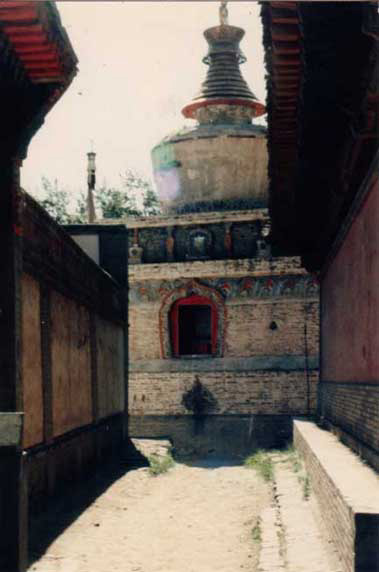
That routine was shattered one day in 1998 when the abbot of the monastery, Arjia Rinpoche, called the monks together and told them he could not stay in China.
Soon after, he fled into exile in the United States.
``Political pressure caused me to leave our monastery and leave our homeland,'' Arjia Rinpoche said in a recent interview from his new home in San Francisco.
"Rather than compromise my religious beliefs, I just chose to leave our monastery."
It was not the first time politics has intruded into the monastery at the foot of green Lotus Mountain, just outside the city of Xining in China's western province of Qinghai.
Kumbum is one of the six leading monasteries of the ``Yellow Hat'' sect of Buddhism. Members include exiled Tibetan spiritual leader, the Dalai Lama, who lived at Kumbum when he was a boy.
![]()
![]()
![]()
During the tumultuous Cultural Revolution from 1966 to 1976, zealous Red Guards burned Buddhist scriptures and destroyed objects of worship. Authorities forced Arjia Rinpoche to halt his religious studies and toil on farms near the monastery.
Conditions improved in the 1980s after China reopened temples in Qinghai and neighboring Tibet, including Kumbum, in 1978.
But religious worship is now flourishing again at Kumbum Monastery, albeit under the watchful eye of the government and in a climate of fear, monks say.
``There is no freedom here,'' said one 15-year old monk dressed in a traditional maroon robe. ``I cannot tell you why,'' he added, signaling that he was unsure who might be listening in.
SERVING TWO MASTERS
Arjia Rinpoche said he came under growing pressure to denounce the Dalai Lama and back China's choice for the 11th reincarnation of the Panchen Lama -- Tibet's second highest religious figure.
Beijing attacks the Dalai Lama -- who fled to India in 1959 after a failed uprising against Chinese rule -- as a supporter of independence for Tibet, which China has claimed as its territory since 1950.
It selected a reincarnation of the Panchen Lama in 1995. The Dalai Lama's choice, embraced by his followers as the true Panchen Lama, disappeared.
``As abbot of Kumbum Monastery, I would have been forced to help the government have its choice of the Panchen Lama accepted by the Tibetan people,'' Arjia Rinpoche said last year.
``This would violate my deepest beliefs. It was at this point I knew I must leave my country.''
The monks mourn the departure of Arjia Rinpoche, crediting him with initiating renovations to the sprawling monastery, which dates back to 1560.
Some say they do not know why he left.
Arjia Rinpoche held top positions at state organizations , including deputy chairman of the Chinese Buddhist Association. One monk shows a visitor a book containing a photograph of the abbot with Chinese President Jiang Zemin (news - web sites).
But the monks know control over their activities has tightened in the three years since his departure.
CHINA TIGHTENS GRIP
Chinese officials deny limits on religious freedom.
"There are no limits by the state on religious belief," said Dramdul, director of the Institute of Religious Studies at the state-backed Chinese Center for Tibetan Studies in Beijing.
"You can see the freedom of religious belief. The number of monks at temples. These phenomena and figures amply show there is religious freedom."
Monks at Kumbum say China exercises control over the monastery through a "democratic committee" with a figurehead director replacing the traditional post of abbot.
Police conduct periodic searches and Communist political study is required alongside classes in Buddhist religion, medicine, astronomy and traditional arts, they say.
The number of monks is stable at around 600, but authorities limit increases and some monks have fled to India -- home of Tibet's government-in-exile -- in the last three years.
Kumbum's luxurious ``Great Sutra Hall'' once held more than 3,000 monks chanting morning prayers.
Monks also point to more Chinese living at the monastery and nearby town, as well as busloads of local tour groups which outnumber pilgrims and upset the peace of monastic life.
"I want to go to India," said a 22-year old monk who has lived at Kumbum since he was a boy. "There are no Chinese there."
At Kumbum, there are small but significant signs of dissent against Chinese rule.
Monks keep pictures of the Dalai Lama, some even pinning them to the walls of their spartan rooms.
Alongside are photos of the revered 10th Panchen Lama, but none of the young boy China tapped as his replacement.
Arjia Rinpoche said he hopes to return to his monastery one day.
"Always, we all miss home. I wish some day I'll go back home. I don't know when."